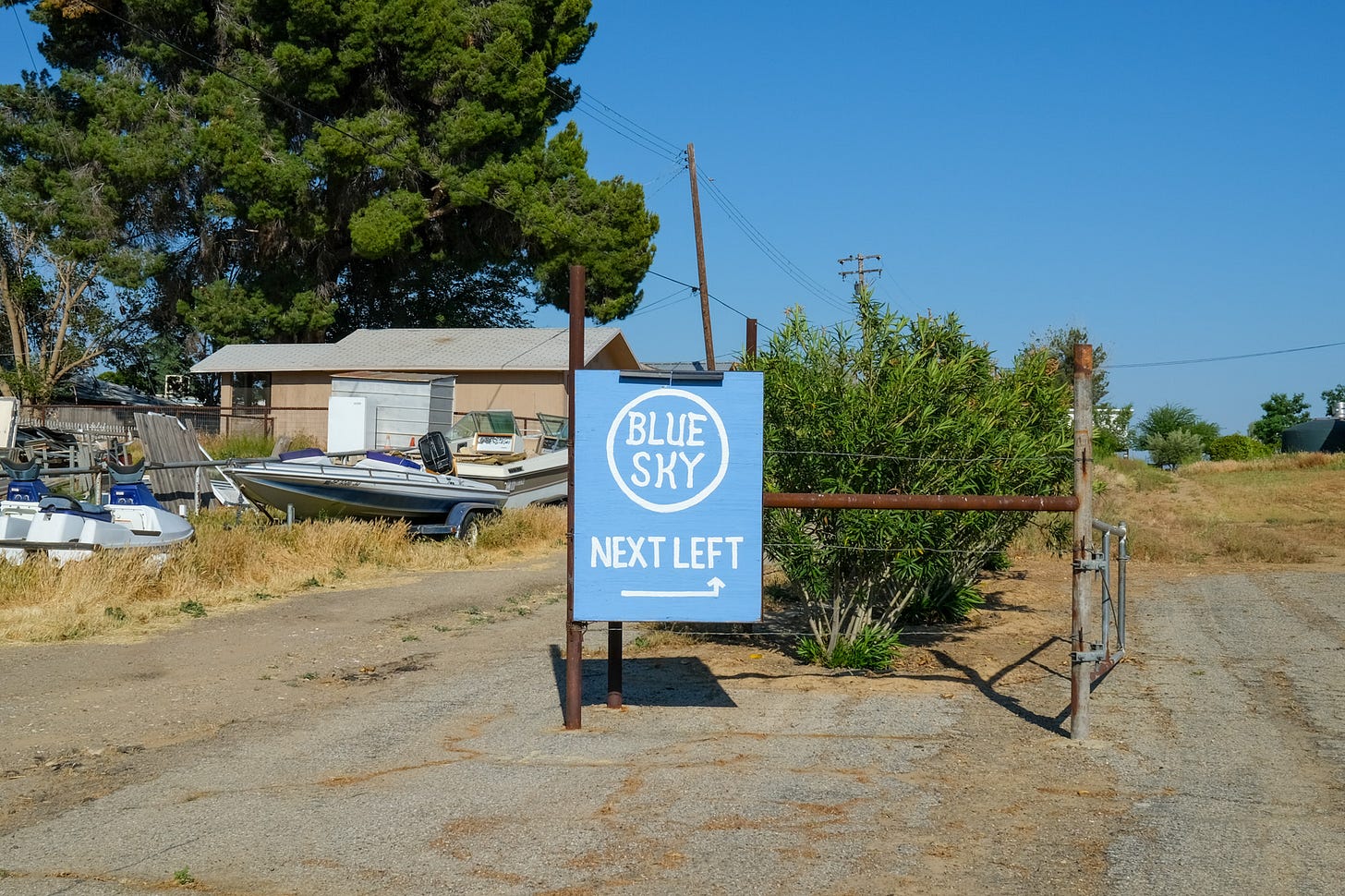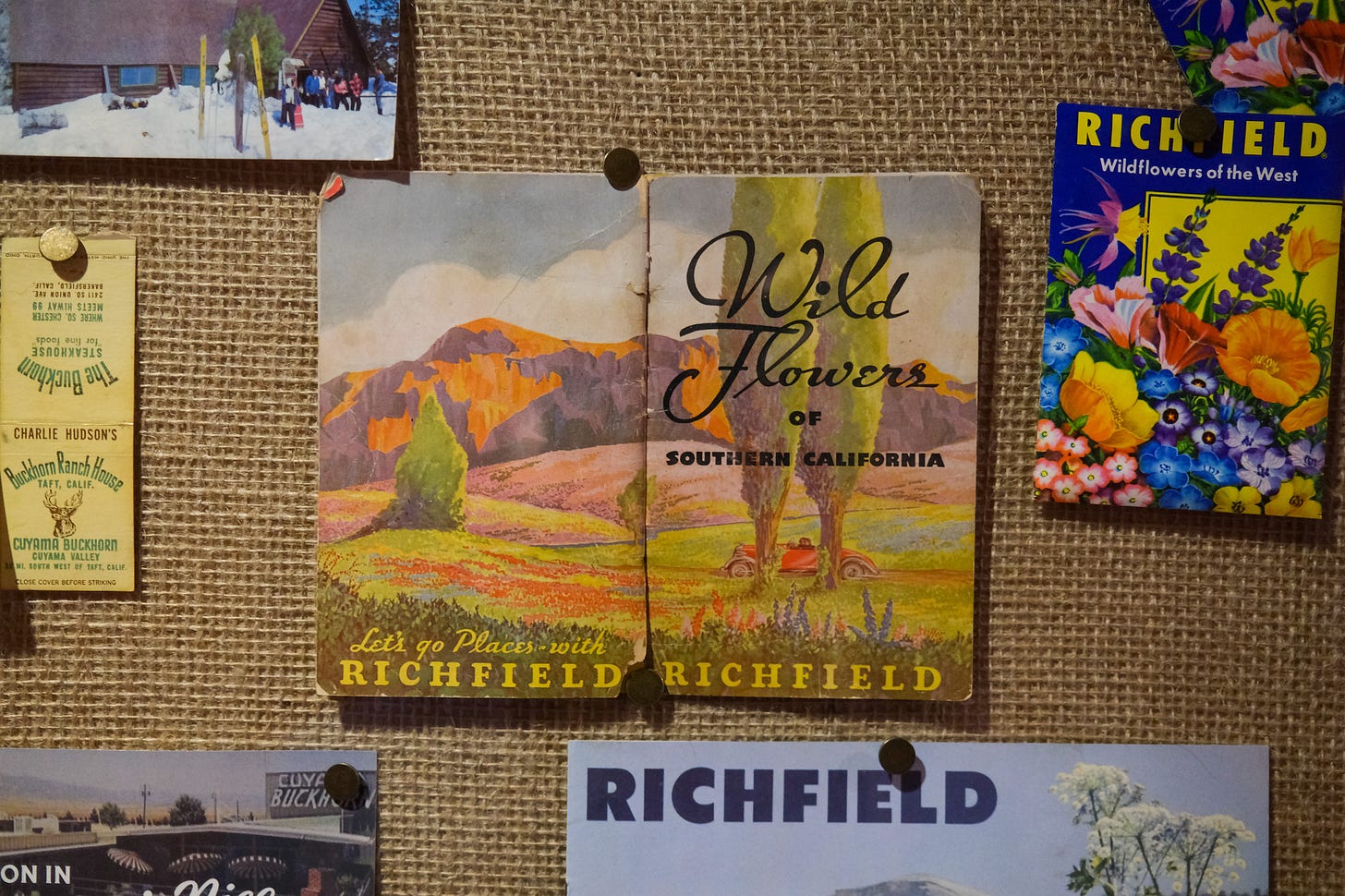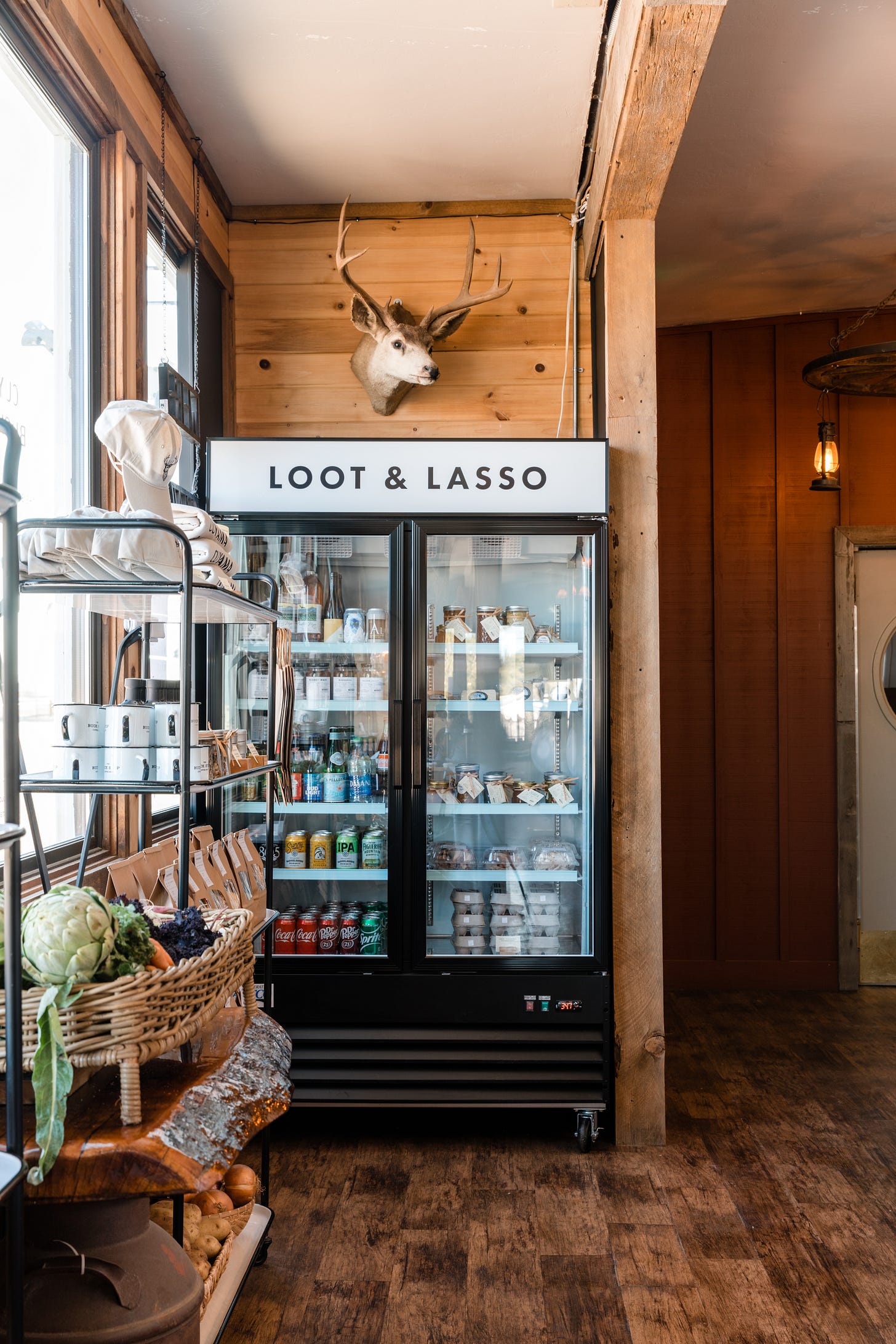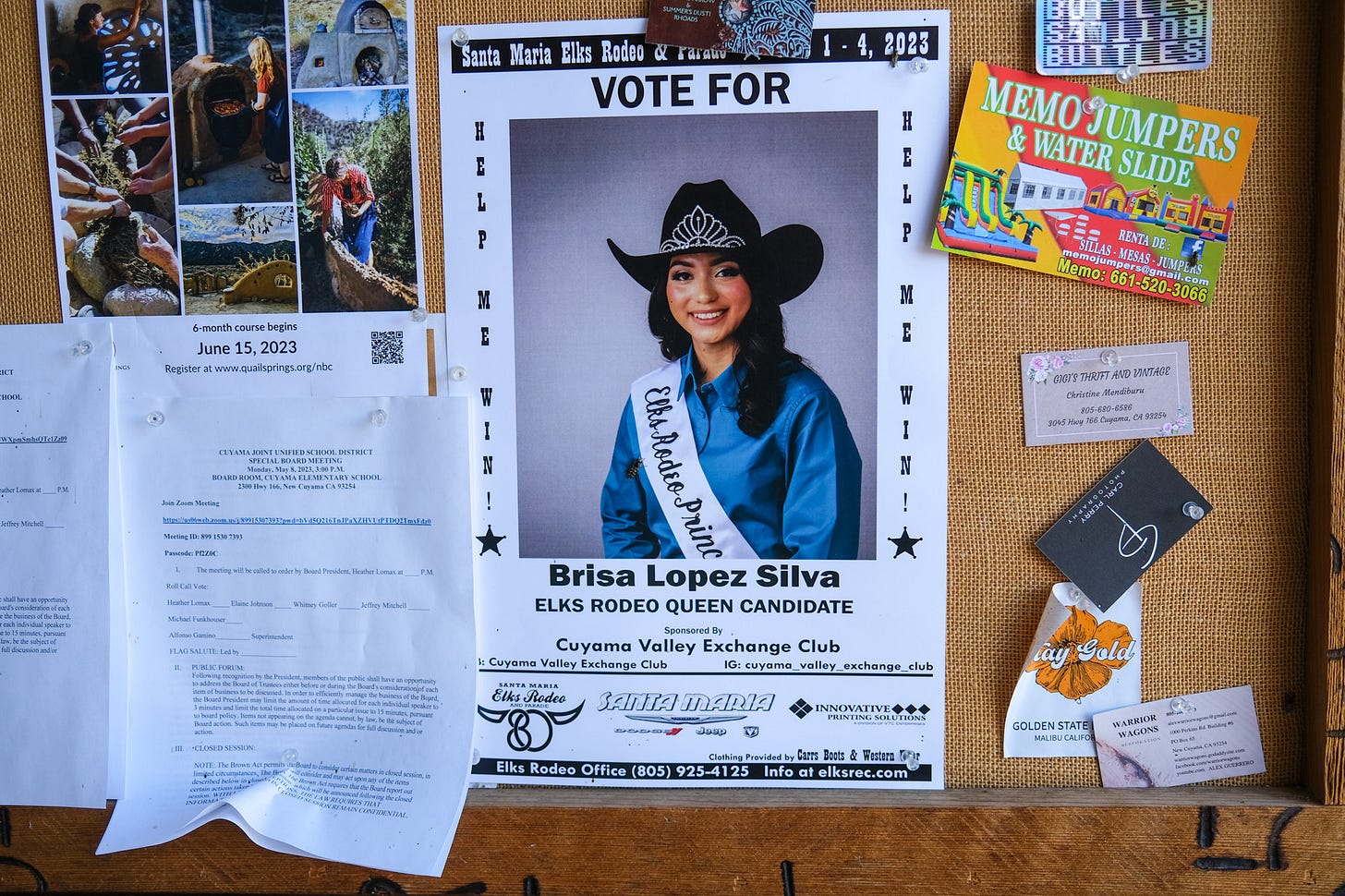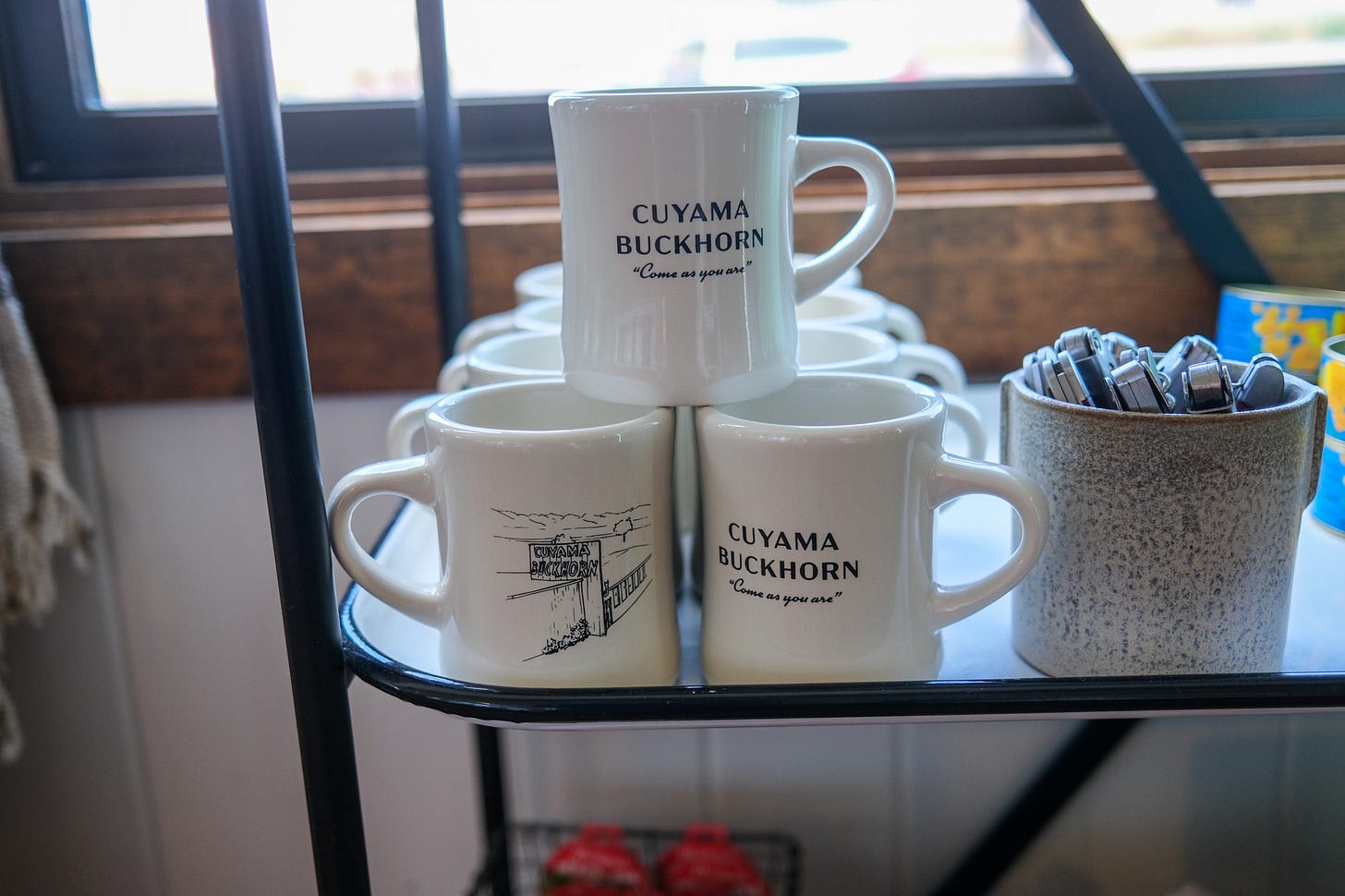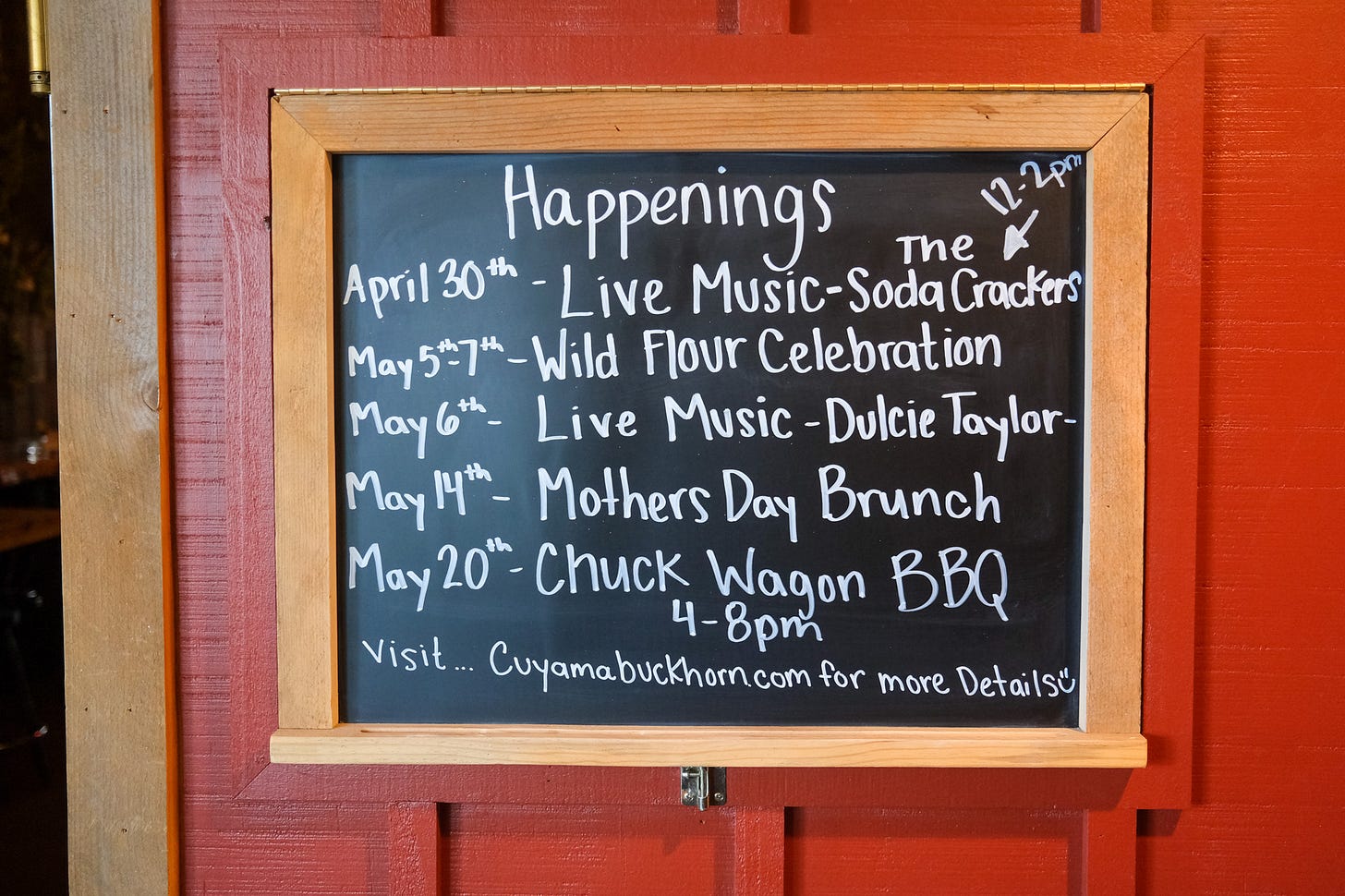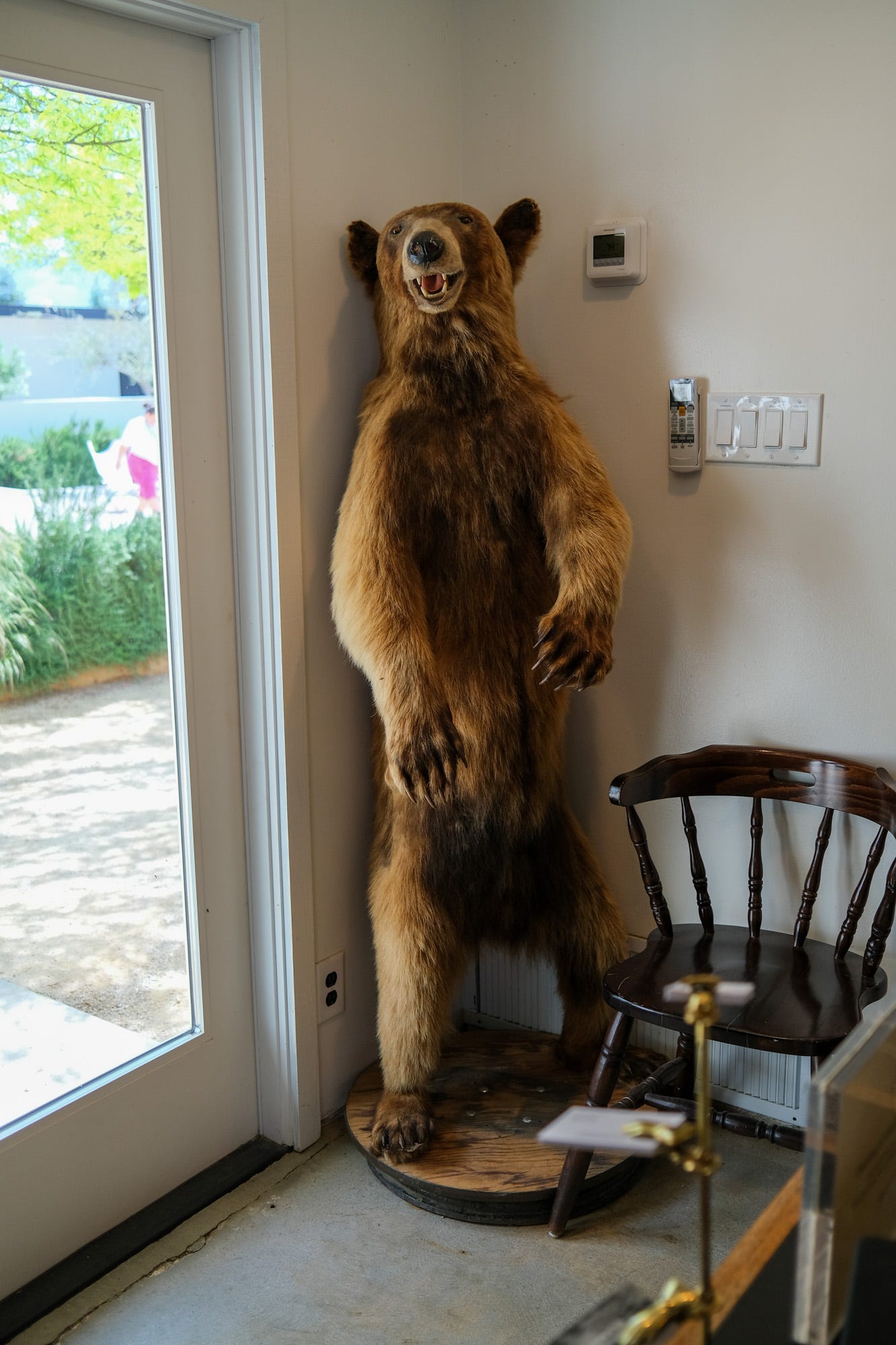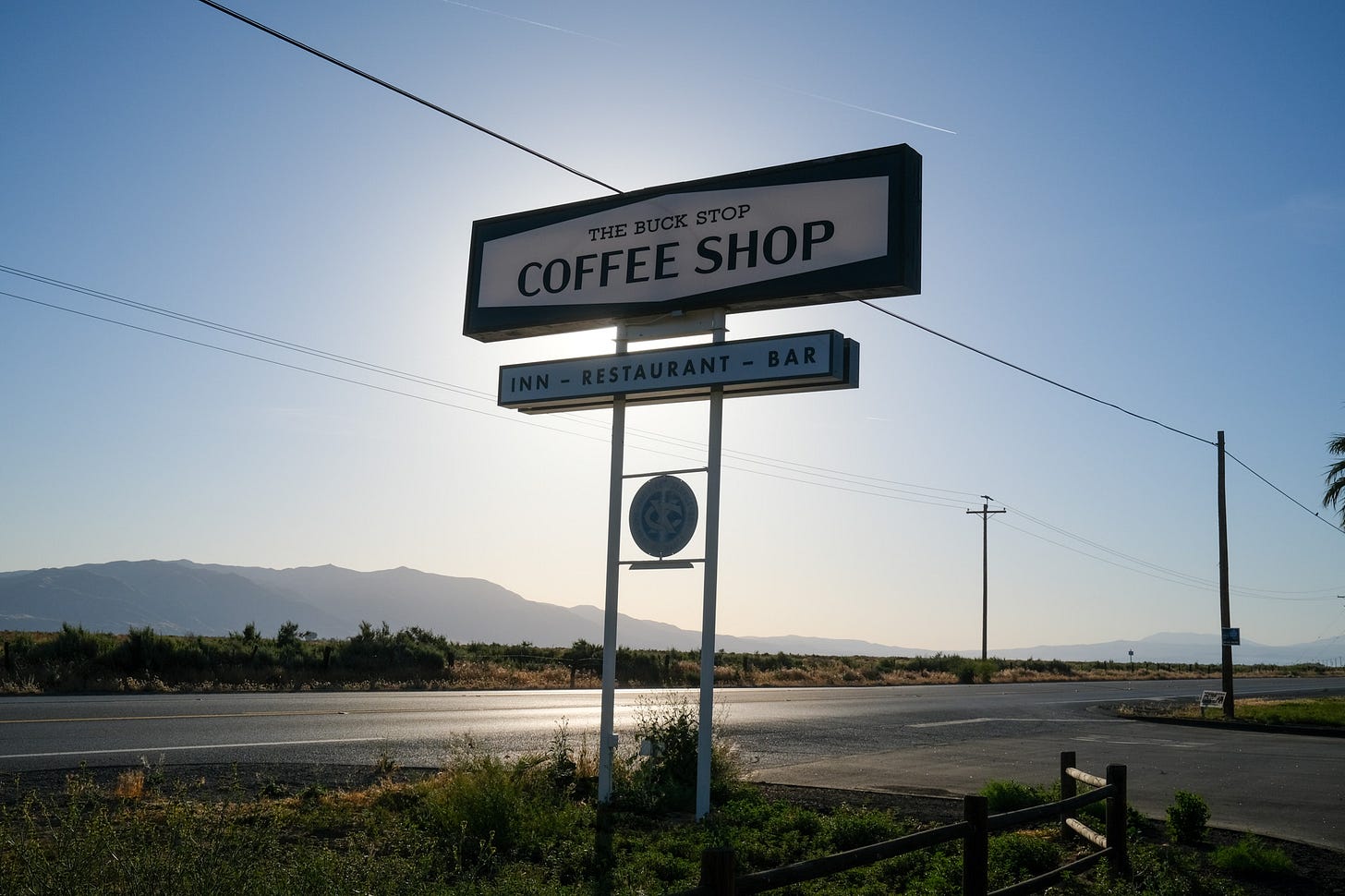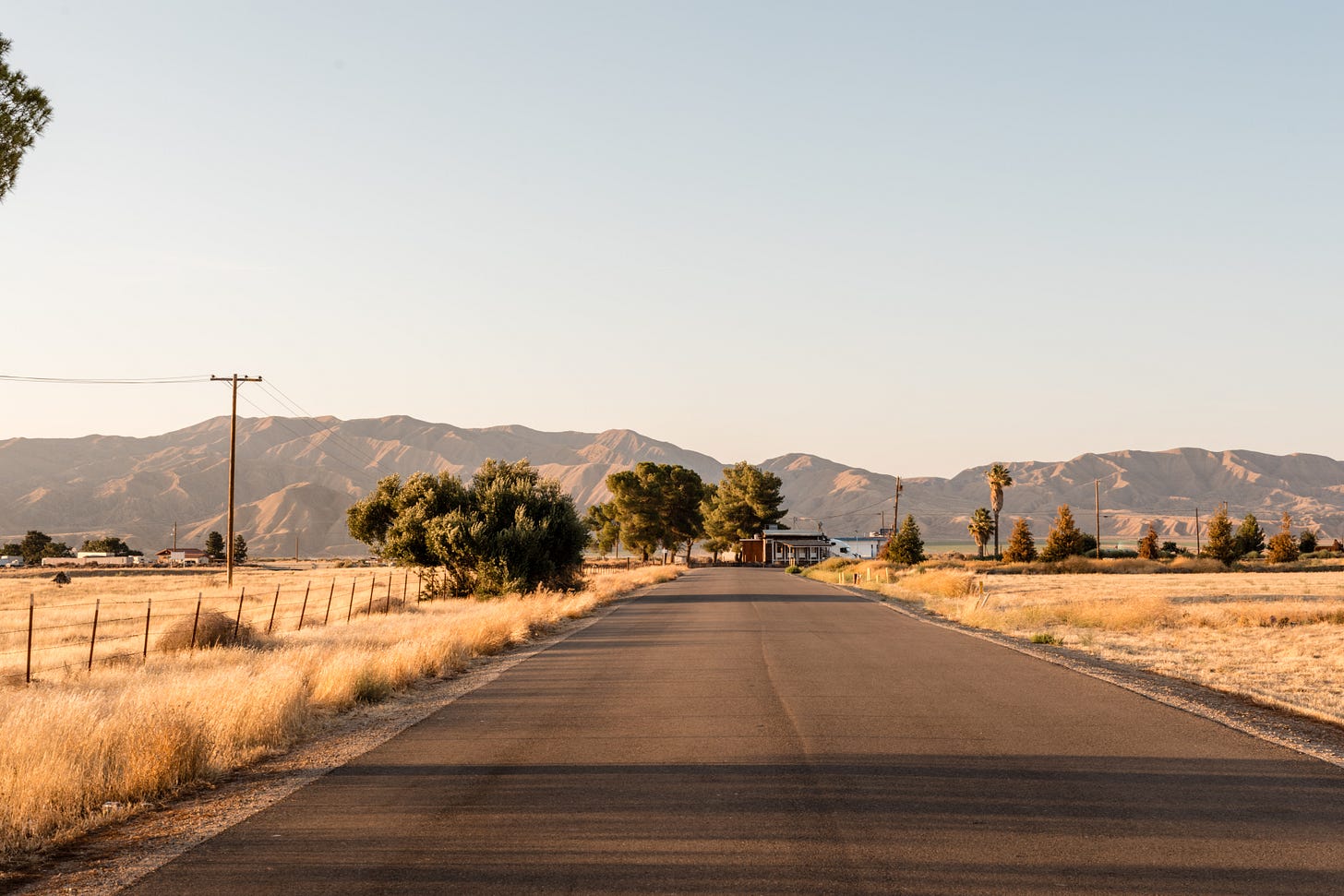In this edition of Desire Paths…
Meet the LA duo who bought and renovated a roadside motel in the middle of nowhere before becoming evangelists for the local community. Will Cuyama Valley become another Joshua Tree or Marfa? Keep reading…
P.S. I’d love if you subscribed to this newsletter. What have you got to lose?
I’m Danny Giacopelli, an editor, photographer, traveller and small business fan. By day I’m Editor-at-Large for Courier magazine. This is my personal newsletter, Desire Paths.
Desire Paths is based on the idea that the most fulfilled, fascinating people in the world chase after risky dreams, change careers, make unconventional decisions, and cross oceans to start something new. I go deep with them—small business owners, designers, shopkeepers, farmers, billionaires, hermits, maybe even you—and share everything I learn.
Path #6: Cuyama Buckhorn owners Ferial Sadeghian & Jeff Vance
“You immediately know out here that doing things right, building relationships with the ranchers and farmers and the community, those are the things that are going to make this business work.”
Cuyama Buckhorn is a classic roadside motel in New Cuyama, California, built in 1952. Desire Paths readers might already know that I had the pleasure of passing through the extremely beautiful (and extremely isolated) area the other week, and had this to say about it.
Below, as promised, is my lightly edited conversation with the Buckhorn’s current owners, Iranian-born architect Ferial Sadeghian, and Jeff Vance, founder of the LA-based design firm iDGroup.
They bought the property in 2018 and have since turned it back into something special. They’ve also discovered that some of the most rewarding aspects of the project haven’t involved hospitality at all…
Hello you two. Was owning a hotel in the middle of nowhere always your dream? Or rather… how’d you get into hospitality?
Jeff: I started my career in the film industry, doing everything from production and special effects to set design. I eventually got into real estate and ended up with a design and architectural firm. My family—my grandfather and his father and grandfather—were all in the hospitality business, in bars and restaurants. My great grandfather actually had a hotel and my grandfather was president of the bartender’s union. So as a kid I was always going to these places, sitting at the bars and talking to the managers.
Ferial: I'm an architect by education. Now that I think about it, I was training for this [project] for a very long time. Being Persian, parties and event planning come naturally. My parents were diplomats in Baghdad before Saddam and way before the Iranian revolution. So they cared about things like presentation and setting the table. As a kid, my mom would cook, but I was responsible for how each dish was served. Through my dad I was exposed to lots of fine dining and good food in Europe and also roadside places that were very different than in the US. Here there’s Carl's Jr. and if you're lucky an In-N-Out. In Europe, so much belonged to the place. When you passed through, it was often a mom-and-pop and the food came from the garden.
Walk me through how you discovered and bought the Buckhorn.
J: Ferial and I started working together. And as we got closer, we realized we both wanted to do a hospitality project. I was scrolling on my phone late one night, trying to fall asleep, and I saw that the Buckhorn was for sale. I couldn’t believe it. I'd been coming to the Buckhorn for many, many years. I said to Ferial, You gotta check this place out, it’s awesome. So we drove out there.
F: Jeff texted me about the Buckhorn. He’d known the place for a while. For me it was fascinating. It was the middle of nowhere. The hotel looked very different from what it does now. But originally we were looking for a hidden place, not directly on a main road, and especially not on a highway!
J: It’s actually funny how it happened. Right behind the Buckhorn is Blue Sky Center [a local non-profit]. Ferial looked over at a building and said That's a Khalili! A building made by the Persian architect Nader Khalili, a professor she had in Tehran. I said There’s no way a Persian architect, an instructor you knew, built something out here in New Cuyama. But sure enough, it was. That kind of brought the whole story together. And we fell in love with the place.
Serendipity! So you bought the property. Then what? Time for the hardhats and shovels?
J: The good news and the bad news was that the Buckhorn is a 1952 original. It really needed a makeover. In these types of projects, when you scratch at something and it's usually a system like plumbing, you don't want to fix just that one pipe. You gotta chase it back until you find out if it's in good shape. It could go all the way to the street. The hotel rooms were a cement block, which is fantastic for 1950s architecture. So we didn’t have to get into it structurally. All the buildings were in great shape, but several were just storage. I don't know how many rooms were operating. Some had been remodeled in the 80s/90s, some probably before that. It was a mishmash.
F: The mid-century architecture was something we both care for. The bones were there. Where the pool and bocce ball court is today, that was all asphalt. You could pull right up in front of your room back then. It was a true motel. What we did at the beginning was take away, just to see the reality of what was there. I remember walking into a storage space with a thick, dark, dirty carpet and chairs up to the roof. We were like, wait a minute, look at that big fireplace. This couldn't have been a storage space originally. This should be our lobby. Later on when the local ranchers came in, they said, Oh, you brought the lobby back!
So you wanted to stay pretty closely connected to the Buckhorn’s past.
F: We spent hours and hours reading about the Buckhorn in the library, and looking for anything we could find online. We did a lot of research. The history and architecture was important to us. We found out the architect was the same person who designed Flamingo in Las Vegas. And Ciro's in West Hollywood.
J: We're both absolute architecture junkies. We love projects where we can rebuild something and bring it back. When we peeled back layers, we said, Wow, they don't build stuff like that anymore. You gotta remember, this place was developed by Richfield Oil. They had the budgets to do things right. We realized there was more to work with here architecturally than what met the eye initially. The Buckhorn started telling you what to do.
Immediately prior to you buying it, was the Buckhorn just a last-minute stop on the road for tired drivers? What was the story?
F: It was mostly farm workers or construction workers or truckers driving by. And no online presence, no software. That was right before us, and also for a few owners before that. But originally when the Buckhorn was built, back in the golden years, it was glamorous!
J: The hotel was barely operating when we bought it. Back in the day, though, jets would come in to bring people, there were white tablecloths, and a piano player four nights a week. All the way out here! There was an owner who had it for a long time who really loved it and took care of it. It had its heyday. More than one, actually. But like in any small town it goes through cycles.
F: What’s beautiful is when people come back. The granddaughter of one of the owners who had it the longest called us and said she wanted to have her father's birthday here. It was great to experience that.
J: People come through who say, When I turned 21, I bought my first beer there at the bar, or My wife and I met here 20 years ago. There's a lot of history here. But it was scattered around and nobody was bringing it all together. That's what we're trying to do.
The best proof is if locals still come or if they feel they're not welcome anymore. When I was at the Buck Stop having coffee, the Santa Barbara Fire Department was having breakfast next to some 20-something creative director types. I thought it was cool.
J: At different times we'll look across the cafe or bar and see Silver Lake hipsters next to cowboys and the conversations that happen, it's really amazing.
Yeah, what strikes me is that this isn’t some random hipster project dropped into the desert. The Buckhorn feels like it’s rooted in the local farms, local business scene, community.
F: The Buckhorn had always been the hub in New Cuyama, during good times and bad. If something good or bad happened in the town, everybody would gather here. Some of that had gone away. We're trying hard to bring it back. We just had a fundraiser for the rodeo queen, the daughter of one of our team members. It was so great to see all the people here and the energy.
J: But by the same token, a couple of days later there was a fire down the road and everybody congregated here. The Buckhorn was a sort of information hub. When things happen, we're usually aware of it pretty quickly.
F: When the nearby airstrip went in, we talked with the pilots. Now we're getting a camera because they need to see the top of the mountain before deciding if they fly in or not! We’re also working with Santa Barbara Food Action Network and through that we created Cuyama Food Action Network, which started during Covid. We’re helping develop emergency strategies for the town too. We had a really hard winter recently. It hadn't snowed like that for 20-something years and some houses had limited access. We’re working the community and Blue Sky on how each group can become a hub for heat or food. Things we never thought we’d be involved in.
I mean, if you were a hotel in Downtown LA or Santa Monica, you'd be focused on profit margins and pop-up events with cool chefs, not how to make your entire town resilient. You’re in a different headspace.
J: Well, I have to say, as far as profitability goes… you immediately know out here that doing things right, building relationships with the ranchers and farmers and community, those are the things that are going to make this business work. We’re running a business, but we never actually sat and thought, Okay, what's going to be a big profit center? You’ve gotta blend in with the environment. So food has become big for us. That's one thing I didn’t expect. Some of Ferial’s closest friends now are in the grain business. You’ve gotta make that work before you can even talk about what the business profit centers are going to be.
F: A lot has been education for us. If Blue Sky wasn't here, I don't know if the path would have been the same. The first event we went to in town was a farmers and ranchers dinner. We thought we were the new ones; that everybody had met and worked together. Then we found out it was the first event Blue Sky had organized to bring everybody together. We did the next event. We’ve got two local wineries here, each one 20 minutes from us, and we found out they’d never met or tried each other's wines! So we were swapping wines. They’re busy, they’re farmers and ranchers, they work hard during the day and rarely have time to go meet people. So we became a part of facilitating that.
We're also working on things like agritourism and town beautification. Someone reached out to Blue Sky through Caltrans [California Department of Transportation] and said they’ve got beautification funding if we had a group that could support it. The next day we met and the project starts next month—a $1.2m grant for the beautification of the highway.
Amazing.
J: And we originally thought the only rewards and gratification of owning the Buckhorn would be purely from the hospitality side of things!
F: It’s a totally different pressure on us, too. Especially when payroll hits. But it's not just about operating the hotel, it's all the outside stuff we’re involved with. That's where our time goes—having meetings for things we never thought we’d be having meetings.
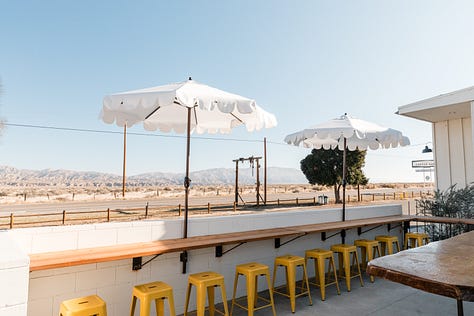
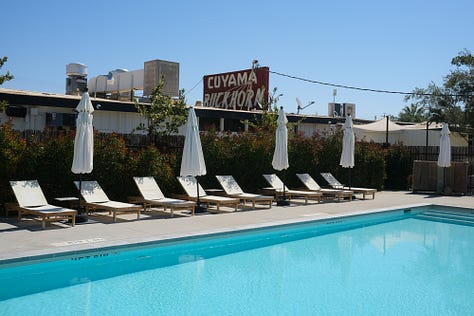

What you and Blue Sky do sort of reminds me of Fogo Island Inn, a hotel in the middle of nowhere in Canada run by a social enterprise called Shorefast. For a town of 500+ people, Cuyama seems to really punch above its weight. Do you also look to a place like Joshua Tree? Will Cuyama be covered in vintage stores in 5 years?
F: We already have vintage stores! But this is the big question. The community all came up with this answer: Do we want to create more economic value for everybody living in Cuyama? Yes. But do we want Cuyama itself to grow? No.
You don't want to price out the locals.
F: On the one hand, we were new here too. We moved here five years ago. But now we're the old ones here. A place for people to work and make money is very important, so we're becoming one of the largest employers in a small town. But it seems that any new property owner or rancher who’s come here in the last couple years has been so engaged in the community. They care so much about it and have become a part of it.
J: Rather than exploit it. Have you ever been to Marfa?
I know a bit about Marfa, but I've never actually visited.
J: Marfa was one of the earlier comparisons that was made to this little town. I hadn't been to Marfa either, neither of us had, but I was familiar with it. And it was pushed on us so much that we made the trip there. You know, we're not anything like that at the moment. But I do see the comparison.
They’ve also got a well-known hotel there, El Cosmico, whose owner Liz Lambert announced some big plans recently. It’s definitely an interesting parallel or crystal ball thing.
J: Obviously it has a lot more commerce than what we have here. But I see the comparison. In some ways we strive to be something like that, but in other ways we are definitely our own unique thing. We’re located where we are. We're 2+ hours from Hollywood, Silver Lake or Santa Monica.
F: Whereas Marfa is 7 hours from Austin!
What do you think more generally about the growing trend of renovating roadside motels? Why is it happening?
J: It’s a fashionable thing to do now. It obviously started before Covid. I think it's fun. There's an opportunity. People are on the road. Local vacation spots are a little bit more popular now as you don’t have to get on a plane. But the hotel world is on fire. You’ve seen rates—it’s amazing. It's not unusual to see $600 or $800/night rooms. They've gone through the roof. And if you can create an experience where you don't have to spend that kind of money, it's desirable. Especially in a unique area. There's no Aman or Ritz in Cuyama. There are big, fancy names in Santa Barbara and they're fantastic and beautiful. But talk about a different experience.
F: Also these roadside motels, these structures, are there. They've been built right. There's nothing you can build right now that would could match them. So the fact that they're being reused is great.
J: It’s very rare that anybody would attempt to build an 18, 22 or 26-room hotel now. Especially in California, it’s so difficult to get it zoned and built.
Oh, really?
J: Oh my god, yeah. It's very hard. That's a later dream for us, at some point—to possibly build new. We're in the business, we're builders, we're designers, and we cut out a lot of middlemen. But it’s so hard to do.
Lastly, how do you two spend your time between LA and the Buckhorn?
F: We’re for sure here once a week for 2-3 days. Work and life have merged into one. Weekends are important here, so we’re often here on weekends and then we'll go to LA for office work.
J: Yeah, design firm work during the week and hotel work on the weekends. We've grown into it. When we first got here we took a couple hotel rooms so we could be on-site. Thankfully we got a little busier, so we made a work suite. When we acquired the building, there were a few houses for support management staff, so we then stayed in a house and remodeled it. But we were enjoying it so much that we committed to the area in a bigger way than anticipated. So right behind the Buckhorn is a road, and if you continue up that road four or five miles, we’ve got a little ranch up there now.
I was wondering where that road goes!
J: Cattle, oil fields and dirt roads all the way there. We've got some friends and family who really love it and appreciate it. But then some others who come to us and say:
Who are you hiding up there?
What are you doing?
Go deeper… Cuyama Buckhorn / Blue Sky Center
UNTIL NEXT TIME,






